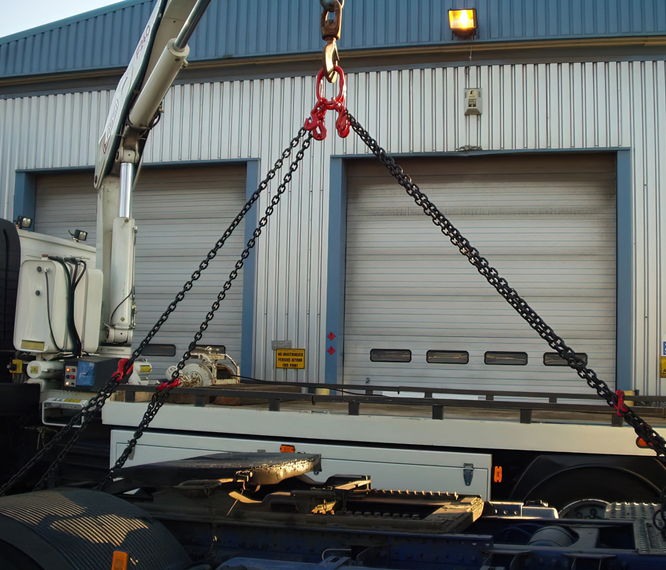
















































































Ratchet Straps can be used independently of any type of anchor point on the floor or wall of a truck or trailer, and you can use them whenever you need to secure a load, unless it is a very large load such as a car. It becomes the preferred choice for most flatbed truck or trailer drivers.
Always know the WLL of the Ratchet Straps and the weight of your load before transporting, always make sure that your load does not exceed the WLL of the Ratchet Straps. if it does, you will need to use multiple Ratchet Straps in shorter length intervals so that you can spread the tension to secure the load safely. Otherwise, you will need to use winch straps or Grade 70 chains to secure your load. Because it is important to ensure safety.
The release catch, also called the release lever, is located in the centre of the removable part on top of the ratchet. Lift the ratchet handle and shaft at the same time so that it is fully open and the opening is up. Close and then flip the ratchet, this is done by pulling the release catch upwards and flipping the ratchet so that the gears are facing upwards, this will give you access to the shaft assembly.
Also called the mandrel, and place the strap through the open slot under the ratchet and push it up through the open slot. Wrap the strap around the shaft and slide it back through the same opening as previously used. Note that the strap should be straight, overlapping the second strap on the other side of the ratchet.
And then pass the strap through the load, hooking the end fittings at each end onto the floor or wall of the vehicle.
If there is too much excess strap not pulled through the mandrel then you risk jamming the ratchet when you start to tighten it. warm tip: you can always tighten it with the ratchet, so don't worry too much about its length.
And forth until it feels taut and secure, then stop. Be careful not to overtighten it, too much pressure and stress may damage the goods and may tear or break the straps, you can try to get a finger between the straps and the goods, if not, it has been over tightened and you need to loosen the straps. Find a middle ground between safety and tightness.
You can close the ratchet handle completely, turn the ratchet back to the closed position and hold it until you hear the latch; if you do not hear a click, tug on the straps and buckle to make sure they are secure, if they are loose then the ratchet strap may be faulty and please replace it. Replace it.
Pull and hold the release handle, this will override the ratchet function and release the lock, open the ratchet handle and the release tab should be easily accessible at the top of the ratchet.
You can easily pull it through the axle slot, turn the ratchet completely over and lay it flat, then pull the free end of the strap, this will release the strap from the ratchet and remove the strap completely.
And press and hold it while flipping the ratchet closed so that the ratchet is in a locked position until the next use. Check the ratchet itself, the strap, and the end fittings for damage, deformation, tears, etc. If so, replace them. Wrap the ratchet strap, rubber band it and place it in a dry box or bag.
